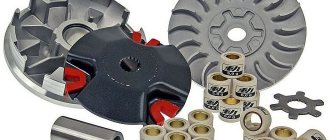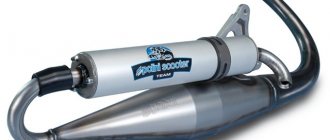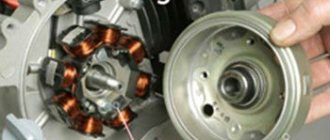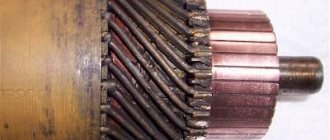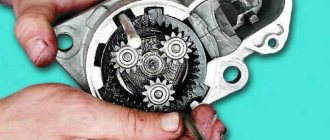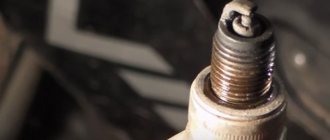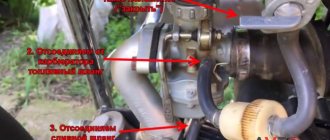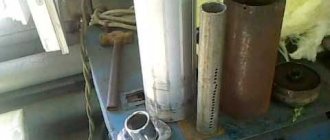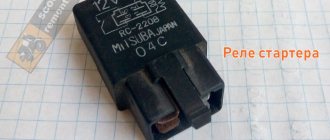A variator is one of the main components of a scooter's transmission. The main task facing the variator is to provide the required speed mode. As a rule, one of the most popular variators is considered to be V-belt. The quality of the CVT directly depends on the number of engine revolutions. The operating principle of CVTs is very simple, especially in comparison with a manual transmission. In addition, in the event of a breakdown, repair work is several times cheaper compared to a manual gearbox.
Design and principle of operation
The fundamental elements are two pulleys and, accordingly, a belt. The cut belt has a trapezoidal shape. The name of the belt (V-belt) comes from the principle of its operation. The transition of the belt to the maximum radius is similar to a wedge. As the pulleys wear out, the radius becomes smaller and the scooter loses speed.
The main condition for stable operation of the variator is its tightness on the pulleys and the absence of slippage. Experienced users of this type of technology claim that 100% absence of slippage cannot be avoided. But it is necessary to minimize it as much as possible. In case of severe slippage, the operation of the entire transmission is at risk. Breakdowns and replacement of parts cannot be avoided. In addition, efficiency is significantly reduced. A striking example of slippage is the drop in engine speed at the very start (the engine seems to be running, but the movement of the equipment is not significant).
Also, straight belt slippage depends on the pulley spring. If it has lost its rigidity, it must be replaced. In addition, unstable, deteriorated performance may be due to wear of the belt itself.
High-quality famous belts from 6000 km.
How else can you determine the correct operation of the variator? – when starting to move, the engine speed is the same until the start of acceleration. At maximum throttle, the engine speed should approximately correspond to the engine power. “People’s” craftsmen sometimes do some “alterations” so that the dynamic qualities of the scooter increase. Also, to speed up the scooter, there is an option to completely replace the variator. For example, you can buy a sports variator for a 50 or 150 cc scooter.
Scooter CVT – is it worth tinkering with?
Why, in general, do you need a variator on a scooter? Not a single decent vehicle, and a “decent” scooter, can do without a device that would change the ratio of engine speed to drive wheel speed. Otherwise, the car would not pull uphill, would not be able to move smoothly and even accelerate. The engine speed is regulated by the gas, but at the same time not only the speed changes, but also the power. And sometimes the high power that is achieved at full engine speed is also required at low speed.
In cars, this unit is a gearbox - manual or automatic. It starts in first gear, accelerates in second, and in third and subsequent gears it already drives in accordance with the set speed limit. So, a variator on a scooter is, to put it simply, a gearbox, only a continuously variable one, based on a different principle of operation. In it, the change in engine speed and wheel speed does not change abruptly, but smoothly, in automatic mode. But the essence, the functional meaning is the same.
There are different types of variators, but the most common is the mechanical V-belt. The principle of its operation is easy to imagine by looking at a bicycle with a Shiman gear shift system. Sprockets of different diameters are installed on the pedals and on the drive wheel; the chain is switched by the cyclist from one sprocket to another. As a result, you can spin the wheel five times by spinning the pedals once, or you can make the ratio of revolutions one to one.
The same thing happens in the variator. Only there is not a chain, but a belt, and not a pyramid of sprockets on the driven and drive shafts, but shafts with a variable diameter along the length. The belt, moving horizontally, grabs the larger or smaller diameters of these shafts, smoothly “switching speeds.” This shift is carried out by special weights under the influence of centrifugal force; when they unwind, they move the belt. The belt must be correctly tensioned and fit snugly into the shaft. But you shouldn’t pull it too tight; the engine will have to spend extra power to transfer rotation to the wheel. If the belt is loose, it will slip and wear out. In everything you should adhere to the golden rule of the mean.
Typically, the variator is fully adjusted at the factory. By and large, there is no point in going inside. You can’t do it yourself better than the experts did. But it is human nature to want to achieve perfection. It may seem to him that the scooter drives “wrong”, precisely because of an incorrectly configured variator. This really does happen. The belt may have worn out or stretched, or the center spring may have weakened. Such things have their own symptoms that need to be monitored. It is worth noting that when accelerating, the engine revs at high speeds, and the scooter accelerates weakly or jerkily, then most likely the problem is in the variator. Acceleration should be smooth and consistent with engine speed. It is worth removing the cover from the variator and looking at how tensioned and how the belt is positioned.
On the drive shaft - on the engine side, it should capture the smallest possible diameter, and on the drive wheel side - the largest possible. Then the torque on the wheel will be maximum. The scooter will move off easily. The belt should be in the same position at idle. In this case, the belt should fit tightly and not slip. The main setting comes down to the correct belt tension. If it is stretched or worn, it should be replaced with a new one. At the same time, it is better not to experiment with belts designed for other CVT models. It matters not only the length, but also the width and thickness. A belt that is too wide, moving, will rest prematurely and will not allow you to achieve the optimal ratio between engine speed and wheel rotation.
Incorrect operation of the variator may also be due to wear on the rollers mentioned above. If they become angular, then they should also be replaced. And again, do not try to install them from another model. Each variator is designed for a specific type and weight of rollers. So if everything is in order with the belt and rollers, then it is better to seek help from a more experienced scooter rider or a professional.
Variations on the handle
So, with the general principles of changing the gear ratio everything should be clear, now it’s time to proceed to the mechanism of this change, that is, how to make the scooter’s variator pulleys move and move apart exactly when required. To do this, let’s immediately make a reservation that in a scooter variator it is customary to highlight the leading
pulley (located on the crankshaft) and
driven
(located on the clutch shaft). In the bowels of the drive pulley there are special cylindrical weights (sometimes also called rollers). These plastic-coated metal bushings are placed in special grooves in which they can move radially. If you move the weights in the drive pulley from the center outward, they will inevitably move the pulley cheeks together. In fact, of course, only one cheek of the variator pulley moves, but this is not important. When the pulley rotates, the weights, under the influence of centrifugal force, tend outward and, shifting the pulley cheeks, push the belt outward. The faster the pulley rotates, the stronger the centrifugal force acting on the weights, and the further outward the compressing pulley cheeks will push the belt. The driven pulley has no weights, but has a large spring that constantly tries to squeeze its jaws together and push the belt out. Like the driving pulley, the driven one has only one moving part - the external one (referred to in foreign literature as the torque driver). It is the torque driver that moves either outward, overcoming the resistance of the spring and allowing the belt to “fall” inside the pulley, or, conversely, inward, closer to the fixed part of the pulley. Thus, the change in the working radii of the scooter's variator pulleys always occurs synchronously. When the belt goes out in the driving pulley, then in the driven pulley, overcoming the resistance of the spring, the belt, on the contrary, moves inward, closer to the axis of the variator pulley.
For a more complete understanding of the process, let’s see how the scooter’s variator behaves under different engine operating modes.
At idle, the rotation speed of the variator drive pulley is minimal. Although a certain centrifugal force acts on the weights, it is not enough to pull the belt out. After all, this requires overcoming the resistance of the large spring of the driven pulley! But now the gas is open, the crankshaft speed jumps, and now the centrifugal force acting on the weights is already enough to push the variator belt in the drive pulley a little outward. Drive pulley coupling: cover; guide plate; coupling body; rollers.
The gear ratio changes. The rotation speed of the driven pulley of the variator increases significantly, which forces the centrifugal clutch to operate. The scooter starts moving. The engine speed reaches its operating level, meanwhile the belt continues to move further and further outward in the drive pulley of the variator, and deeper in the driven pulley. That is, the speed remains unchanged, but the gear ratio gradually changes, making the scooter go faster and faster. This, by the way, hides one of the great advantages of the variator - acceleration occurs at constant speeds, so you can configure the entire system so that during acceleration the engine will operate at its maximum power (for example, this is impossible to achieve with a manual transmission). Finally, the belt reaches its maximum design radius in the drive pulley of the variator, and its minimum in the driven pulley. However, as a rule, it is possible to accelerate a little faster, but by increasing the speed of the scooter's engine, and not by increasing the transmission.
When the throttle is closed while driving, the engine brakes the scooter for some time until the centrifugal clutch disengages. As soon as it is turned off, under the action of the large spring of the driven pulley, the belt returns to its original position, as when idling a scooter. But as a rule, the scooter’s clutch disengages only when it comes to an almost complete stop (10 - 25 km/h).
By the way, about the scooter’s clutch. This device, although it performs independent functions, is very closely connected with the scooter’s variator : if the clutch does not work correctly, the variator will not work correctly, and vice versa. A scooter's centrifugal clutch is almost always three drum-type brake pads that are pushed outward by centrifugal force and engage the clutch drum. The clutch assembly itself is mounted on the driven pulley of the variator and rotates, but the clutch drum is on a shaft, which transmits torque to the rear wheel through a simple gearbox. Thus, in order to make the scooter move, you need to make the clutch drum rotate. This happens as soon as the driven pulley of the scooter's variator gains sufficient rotation speed so that the centrifugal force becomes large enough for the pads to overcome the elastic force of the clutch springs, which prevents their free movement outward. These same springs will “disengage” the clutch, squeezing the pads together when the rotation speed of the driven pulley drops below the critical level for the clutch to operate. As you can see, the system is simple. And it works almost flawlessly, reducing control of the power unit to twisting the throttle (hence, by the way, the name of one popular scooter magazine: Twist'n'go - “Twist and Ride!”). Which not least determined the current wave of popularity of scooters.
This video shows the CVT in action. Shown in the best possible way.
